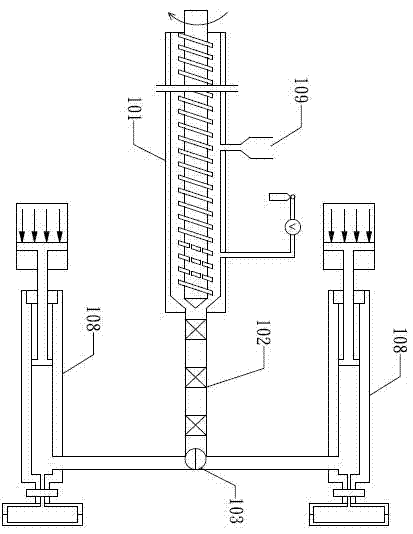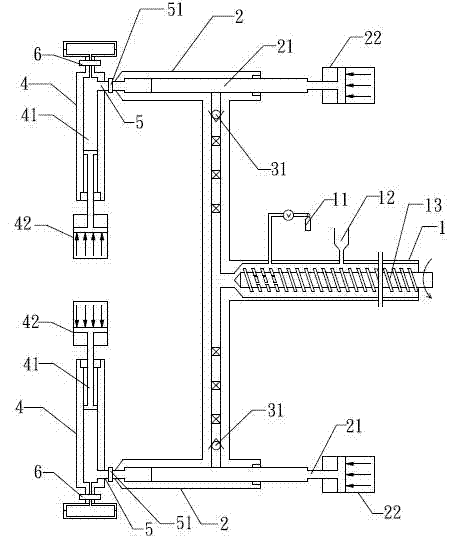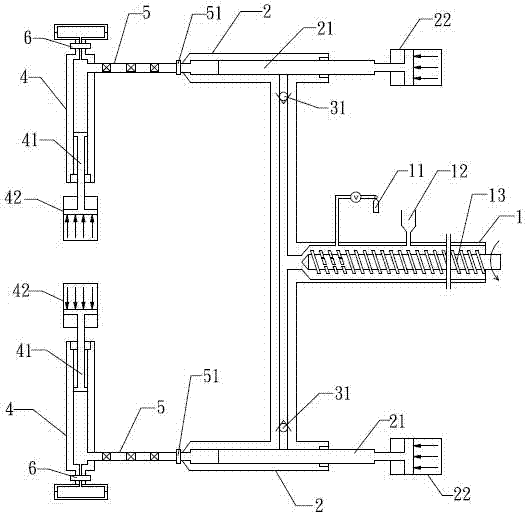Method for forming foam products and system thereof
A product and foaming agent technology, applied in the field of forming foamed products, can solve the problems of large barrel pressure, increased feeding screw resistance, and thinning of foamed products, etc., to achieve small barrel pressure and feeding screw resistance small effect
- Summary
- Abstract
- Description
- Claims
- Application Information
AI Technical Summary
Problems solved by technology
Method used
Image
Examples
Embodiment Construction
[0073] With reference to accompanying drawing, further illustrate the present invention:
[0074] The blowing agent of the present invention may contain a chemical blowing agent or a nucleating agent, but it is better to use a purely physical blowing agent. When chemical blowing agents are used, unreacted chemical blowing agents or chemical reaction by-products of chemical blowing agents are often left on the product; the use of chemical blowing agents is not conducive to the recycling and reuse of products, and the general chemical The cost of blowing agent is also higher.
[0075] The invention can manufacture polymer foam products with air chambers. However, when the present invention is used to manufacture microcellular foamed products, and the desired cell density is very high, the nucleation contribution of the nucleating agent is meaningless, so the nucleating agent is seldom used.
[0076] The physical blowing agent that the present invention uses is a kind of gas un...
PUM
 Login to View More
Login to View More Abstract
Description
Claims
Application Information
 Login to View More
Login to View More - R&D
- Intellectual Property
- Life Sciences
- Materials
- Tech Scout
- Unparalleled Data Quality
- Higher Quality Content
- 60% Fewer Hallucinations
Browse by: Latest US Patents, China's latest patents, Technical Efficacy Thesaurus, Application Domain, Technology Topic, Popular Technical Reports.
© 2025 PatSnap. All rights reserved.Legal|Privacy policy|Modern Slavery Act Transparency Statement|Sitemap|About US| Contact US: help@patsnap.com



